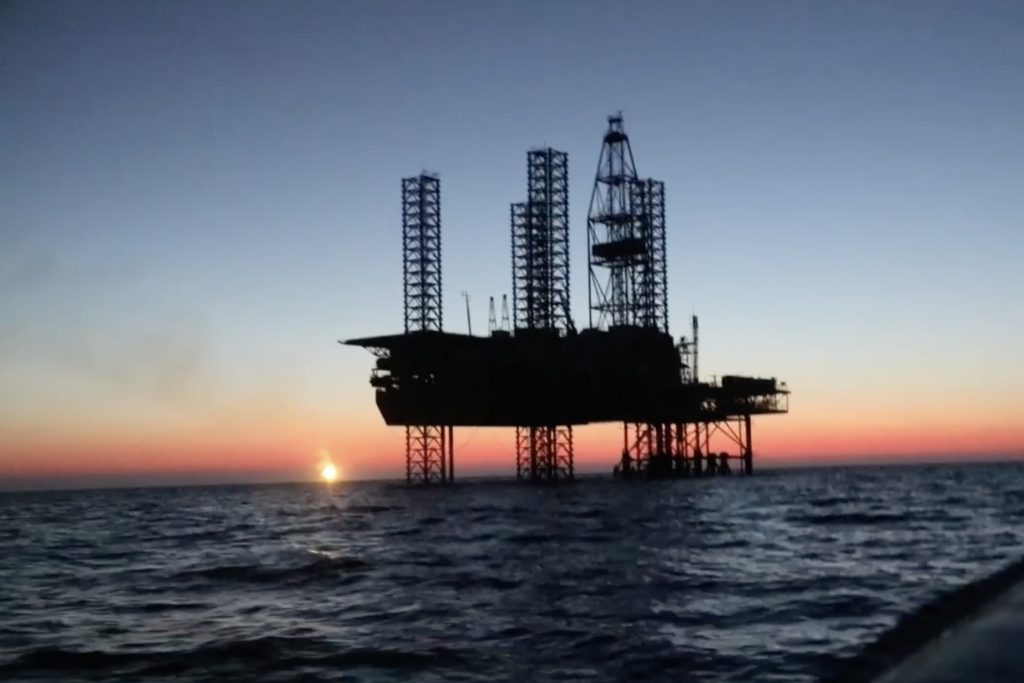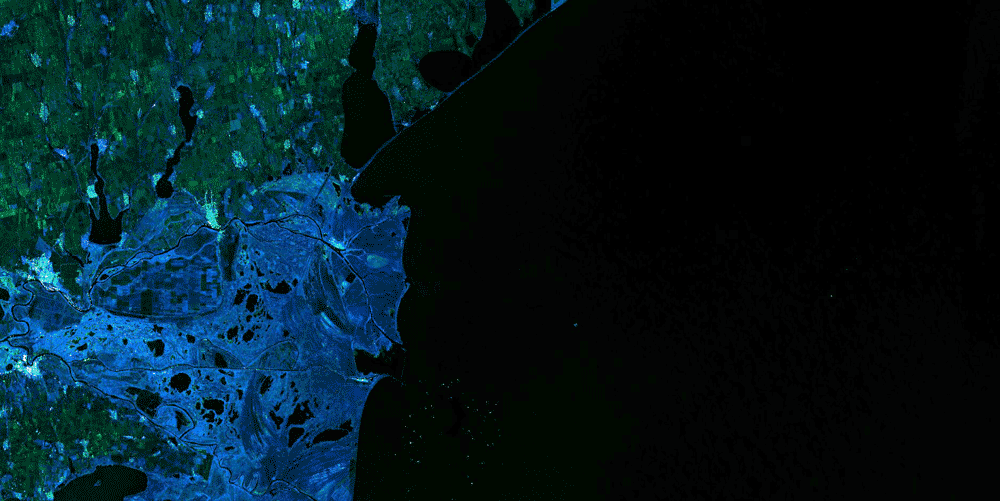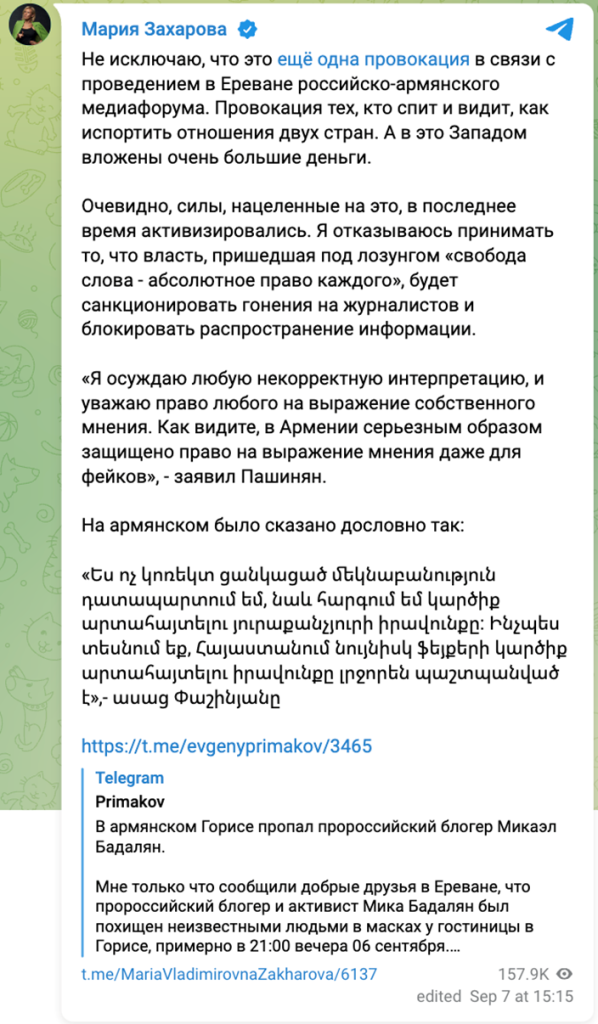Russian War Report: Ukraine’s Black Sea offensive retakes oil rigs near Crimea
Ukrainian soldiers board what appears to be the Tavrida oil drilling rig near the waters of Crimea. Russia protests actions by Armenia.
Russian War Report: Ukraine’s Black Sea offensive retakes oil rigs near Crimea
Share this story

As Russia continues its assault on Ukraine, the Atlantic Council’s Digital Forensic Research Lab (DFRLab) is keeping a close eye on Russia’s movements across the military, cyber, and information domains. With more than seven years of experience monitoring the situation in Ukraine—as well as Russia’s use of propaganda and disinformation to undermine the United States, NATO, and the European Union—the DFRLab’s global team presents the latest installment of the Russian War Report.
Security
International response
Geolocation supports Ukraine’s claim of recapturing oil drilling rig in Black Sea
In a new thirteen-minute-long video posted by the Ukrainian Ministry of Defense’s Main Directorate of Intelligence (GUR), Ukrainian armed forces are seen retaking an oil and gas drilling rig situated in the Black Sea near Crimea. The DFRLab geolocated several identifiable elements in the footage to authenticate the video.

The video opens with Ukrainian soldiers onboard a motorboat that appears to pass by Zmiinyi Island (also known as Snake Island). The island is the southernmost point in Ukraine, next to the Romanian border and the Sulina Canal.

Later, the soldiers board what appears to be the Tavrida oil drilling rig, situated hundreds of kilometers southwest of the Odesa coastline near the waters of Crimea. The DFRLab compared the footage with pictures posted to the online maritime traffic monitoring platform Marine Traffic. Photos of the Tavrida rig on Marine Traffic appear to match the one shown in the GUR’s footage.

The Tavrida rig, alongside three other oil and gas drilling rigs, is known as the Boyko Towers, a reference to Yuriy Boyko, a former Ukrainian minister of energy. In the GUR’s footage, Ukrainian soldiers appear to dismount two electronic radio devices from atop the oil rig. The narrator of the footage mentions the strategic importance of the electronic devices to “monitor” the Black Sea. While the exact use of the devices is not confirmed, it is possible that these maritime radars could have operated as deterrence devices against drones, aircraft, and warships alike. Imagery released by the European Spatial Agency’s Sentinel-1 satellite constellation on September 11 also contained interference patterns that could be attributed to electromagnetic warfare near the drilling rigs.

In addition, the DFRLab analyzed the Russian company PROTEK, whose name appeared on a container in the footage. The company is registered in Russia’s Voronezh Oblast. The website arms-expo.ru, which compiles data on Russian defense contractors, lists PROTEK as a company manufacturing armaments. The website notes that the company produced the KS-100M complex, which reportedly “provides continuous and noise-resistant measurement of planar coordinates, speed, and course of a moving ground object with display of the received data on a digital indicator.” Although the company’s website appears to be “under reconstruction,” an archived version from 2018 features a logo for “EGO Holding” with the subtitle “military-industrial complex.”
Additionally, the label seen on the container in the footage also suggests that the company was contracted by Russian Military Unit 60135. According to Wikimapia, the military unit appears to be located in Sevastopol, Crimea.

Russian armed forces captured the Boyko Towers and other oil drilling rigs located west of Crimea in 2015 following the invasion of the peninsula. In June 2022, reports indicated that the Ukrainian army had successfully struck Boyko Towers.
The GUR claimed that it retook all the Boyko Towers platforms, including Crimea-1 (Independence), Crimea-1 (Petro Hodovanets), and Syvash. However, the footage released on September 11 only shows the Tavrida oil drilling platform being retaken.

—Valentin Châtelet, research associate, Brussels, Belgium
Russia protests series of “unfriendly moves” by Armenia
On September 8, Moscow summoned the Armenian ambassador to Russia to complain about a series of “unfriendly” actions. These included planned participation in joint military drills with the United States starting September 11, the first lady of Armenia’s humanitarian visit to Ukraine on September 6, and Armenia’s commitment to join the Rome Statute of the International Criminal Court (ICC), which has issued an arrest warrant for Russian President Vladimir Putin.
Russia also aired its grievances about Armenia arresting Ashot Gevorgyan, a journalist with the Armenia arm of the Russian state-owned news outlet Sputnik, and Mika Badalyan, a pro-Russia blogger. Both have been extremely critical of the Armenian government. The reasons behind their arrests last week remain undisclosed.
Russian state-owned news agency TASS reported that during a news conference at the Group of Twenty (G20) summit in India this month, Russian Foreign Minister Sergey Lavrov said that Moscow finds Armenia’s decision to hold military drills with the United States “regrettable.” He claimed that “little good” can be expected from “NATO’s attempts to infiltrate into South Caucasus.” Lavrov added that it was strange that Armenia refused for two years to participate in drills organized by the Collective Security Treaty Organization (CSTO) but is now holding drills with the United States.
Russia has offered little support to Armenia during its recent clashes with Azerbaijan. Against the backdrop of the rising tensions in Nagorno-Karabakh, where Russia’s peacekeepers are situated but appear unable to stabilize the situation, it appears Yerevan could be growing frustrated with Moscow.
On September 3, in an interview with the Italian newspaper La Repubblica, Armenian Prime Minister Nikol Pashinyan said that Russia cannot meet Armenia’s security needs and that depending on one partner for security matters was a “strategic mistake.” The following week, Pashinyan told Armenian public television that none of the recent events are related to Armenia’s relations with Russia. He brushed aside questions about his wife’s visit to Ukraine and the US joint military drills. Regarding the Rome Statute ratification, he reiterated that Armenia initiated the process before the ICC issued a warrant for Putin in March 2023. Pashinyan added that ratification would augment Armenia’s security levels at a time when the “CSTO hasn’t fulfilled and is not fulfilling its obligations towards Armenia. We can’t ignore this and do nothing.”
Russian Foreign Ministry Spokesperson Maria Zakharova, addressing participants of the Armenian-Russian media forum September 6-8 in Yerevan, said that these “provocations” had failed; Sputnik Armenia later claimed that she was referencing the arrests of Badalyan and Gevorgyan. In an earlier Telegram post, Zakharova stated the arrests were a “provocation” ahead of the media forum, adding that the West had invested money in creating divisions between Armenia and Russia. She also suggested that Pashinyan doesn’t stand by his promise to uphold freedom of speech.

—Ani Mejlumyan, research assistant, Yerevan, Armenia

